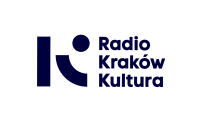WYSPIA Contemporary Art
Contemporary Art At Historic Wawel Royal Castle
This doesn’t happen often. A work of art that we can touch, that we can look through, that changes our perception of our historic surroundings with its uncommon colors. Wawel Royal Castle has many surprises in store for 2023. On January 26, Wyspia opens in the outer courtyard. Inspired by the work of Stanisław Wyspiański, Kinga Nowak’s contemporary art installation symbolically realizes his greatest wish—to leave his mark on this extraordinary place.
The creator of Wyspia is Kinga Nowak, a professor at Krakow’s Academy of Fine Arts and acclaimed artist whose work can be found in the National Museum in Krakow, the National Museum in Gdańsk, and many private collections.
“Wyspia, along with other Wawel initiatives, such as a rich educational program and publications dedicated to Stanislaw Wyspiański—a total artist—consciously foreshadow the great events (including exhibitions) planned for the coming year. They will commemorate Akropolis (Acropolis), the artist’s vision and comprehensive design for Wawel Hill, published in 1904. By inscribing Wyspia into the unique landscape of our priceless heritage, we wish to creatively provoke discussions about art that transcends conventional boundaries like Wyspiański himself did, but which also references and enters into dialogue with the past in an engaging way,” says Prof. Andrzej Betlej, Director of Wawel Royal Castle.
INTERACTIVE RECEPTION OF A MULTIFACETED WORK
Agnieszka Jankowska-Marzec, the curator of the exhibition notes that the artist follows the in the footsteps of Wyspiański’s fascination with Wawel Hill, whilst simultaneously drawing inspiration from his stained glass windows and wall paintings in Krakow’s church of St. Francis of Assisi.
“The colors of stained glass, with deep, saturated hues, illuminated by light passing through them, allied with geometric motifs, representing the grid present in the wall painting influenced the final form of the installation called Wyspia, a title with various meanings,” states Agnieszka Jankowska-Marzec.
“On the one hand, Wyspia is Wyspiański—open, limitless, infinite. But it also a wyspa—Polish for “island”—a fragment, a separate place, which, I hope, changes the way we look at things and allows us to see the world in brilliant colors,” adds artist Kinga Nowak.
“The colors of stained glass, with deep, saturated hues, illuminated by light passing through them, allied with geometric motifs, representing the grid present in the wall painting influenced the final form of the installation called Wyspia, a title with various meanings,” states Agnieszka Jankowska-Marzec.
“On the one hand, Wyspia is Wyspiański—open, limitless, infinite. But it also a wyspa—Polish for “island”—a fragment, a separate place, which, I hope, changes the way we look at things and allows us to see the world in brilliant colors,” adds artist Kinga Nowak.
Visitors can not only approach the installation, but also touch it and, thanks to its unique construction, become part of art work.
“Light and shadow are integral to the installation, creating a closed, yet inviting space for the viewer to enter,” says Jankowska-Marzec. “The possibility of going ‘inside’ the installation, lets viewers interact with the work, enabling them to undertake various activities, depending on their preferences and interests, such as, for example, meditation or photography,” she adds. “While working on the installation, the artist spent many hours observing the effects of light from different perspectives and at different times of day, to find the perfect location for the installation,” the curator continues. “She came to the conclusion that the spot is optimal due to the amount of sunlight it receives (especially in spring and summer), which ensures spectacular visual effects, giving the impression that the sheets of colored glass glow and emit light in various hues,” she sums up.
Curator Agnieszka Janowska-Marzec also points out that the individual elements, the panels of sheet glass in various colors that make up the installation, bring to mind, on the one hand, the way stained glass windows are made, and on the other, arranged in the form of the letter “W,” they allude to Wyspianski’s interest in typography.
Wyspia is accompanied by a rich and varied educational program. Some activities are available in Ukrainian as well as Polish.














